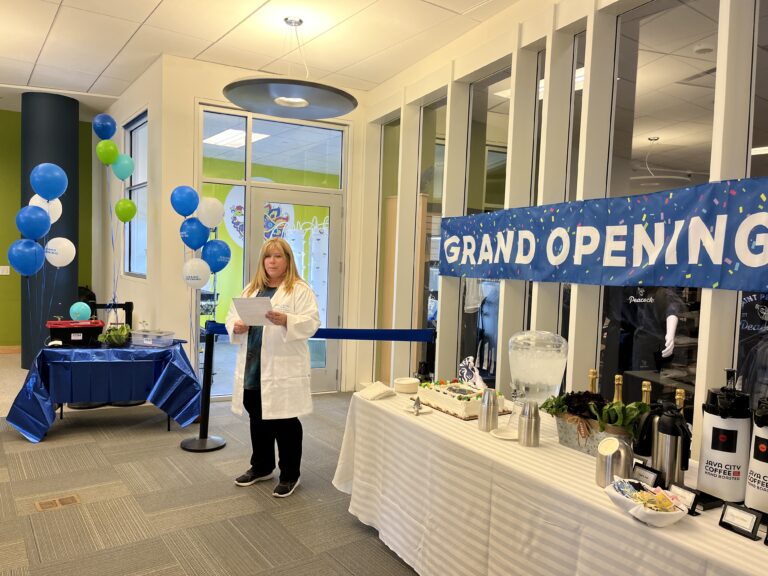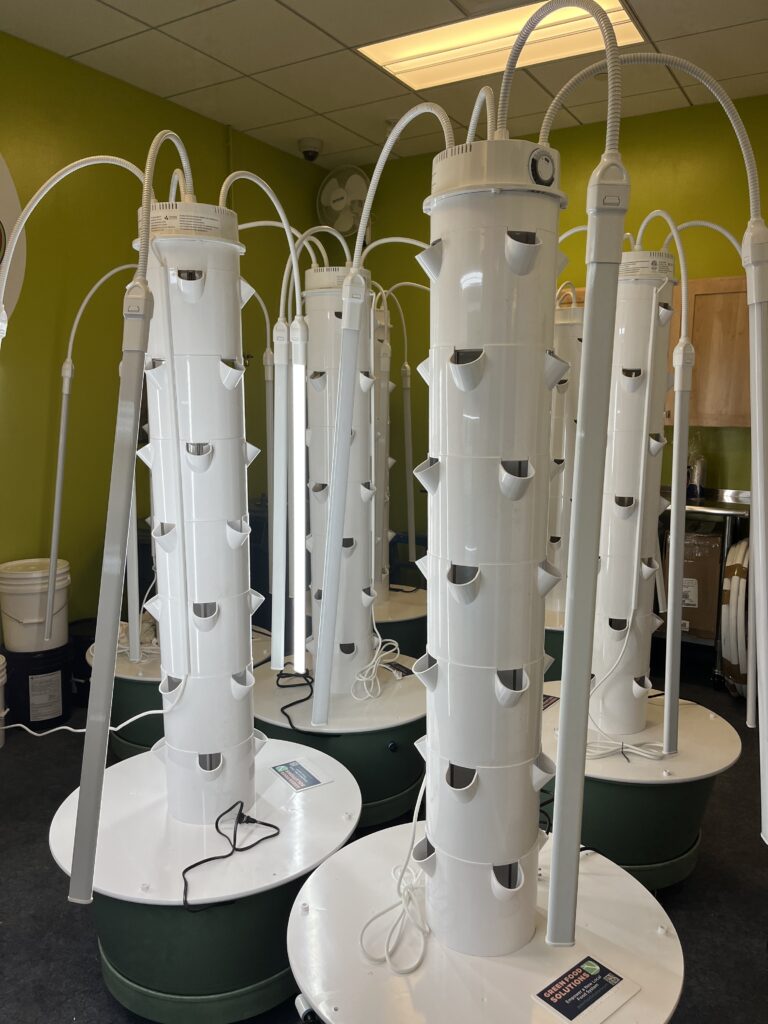Brandy Garett Kluth, Ph.D., at the grand opening celebration of CURA.Members of the Saint Peter’s community will notice that the first floor of the Mac Mahon Student Center has changed since the University celebrated the opening of the Center for Urban Research in Agriculture (CURA) Hydroponics Farm on September 28. According to Saint Peter’s partner, Bowery Farms, hydroponic farms are “smart, indoor farms that create the ideal growing environment for plants to thrive. Grown indoors, plants are protected from things like inclement weather and pests.” Hydroponic farms enable produce to be grown year-round without pesticides.
CURA was the brainchild of Brandy Garrett Kluthe, Ph.D., associate professor of biology and director of the environmental studies program. In September 2021, Saint Peter’s was awarded a historic $4.8 million grant by the U.S. Department of Education for a project titled STEM-PODER. The grant includes funding for two innovation hubs that are designed to provide opportunities for students to partner with outside sources for real experiences in a specific industry or career-field. When Maryellen Hamilton, Ph.D., director of the PODER grant, reached out in search of ideas for the first innovation hub, Dr. Garrett Kluthe was quick to jump on the opportunity and pitch her idea.
Dr. Garrett Kluthe had established a relationship with Bowery Farms, an indoor agriculture company located in Kearny, New Jersey, in the summer of 2020. When the world was on lockdown during the COVID pandemic, Dr. Garrett Kluthe sent homemade hydroponic systems to students who were a part of the University’s virtual SURGE summer camp.
“The project was a hit so we decided to do it again for our hybrid summer camp in 2021,” explained Dr. Garrett Kluthe. “When the opportunity presented itself to pitch hydroponics as an innovation hub on campus, I was pretty confident it would work for the Saint Peter’s community.”
When her idea was accepted it was time for her to get to work! Dr. Garrett Kluthe met with a number of different hydroponic suppliers and producers to determine what would work best on campus. She also worked with various contractors to get the space built. Her motivation for the project was focused on the importance of urban agriculture in the future.
According to the Food and Agriculture Organization (FAO), by 2050, the world will need to increase food production by 60 percent in order to meet the caloric needs of a global population of more than nine billion people.
If traditional agriculture practices were used, the world would need to add about 600 million hectares of land to make that possible. Since people already use half of the world’s habitable land for agriculture production this mean more would need to be found in places like preserves and rain forests. According to Dr. Garrett Kluthe, this creates another problem because land conversion from natural ecosystems to agriculture has historically been the largest cause of greenhouse gas emissions.
This is where hydroponics comes in as a solution because it utilizes less space, land conversion is unnecessary, it uses 90 percent less water, has less of a carbon footprint, can be grown in the market it serves and eliminates the need for pesticides.
According to Dr. Garrett Kluthe, hydroponics is important to students because the market is expected to expand from 2.1 billion in 2020 to 9.8 billion in 2028.
“This growing industry means opportunities for our students right here in our urban communities. This industry will need students with experience in biology, plant research, water chemistry, computer technology, design, business and marketing, just to name a few. Our students will get that kind of hands-on experience here, at CURA,” she said.


